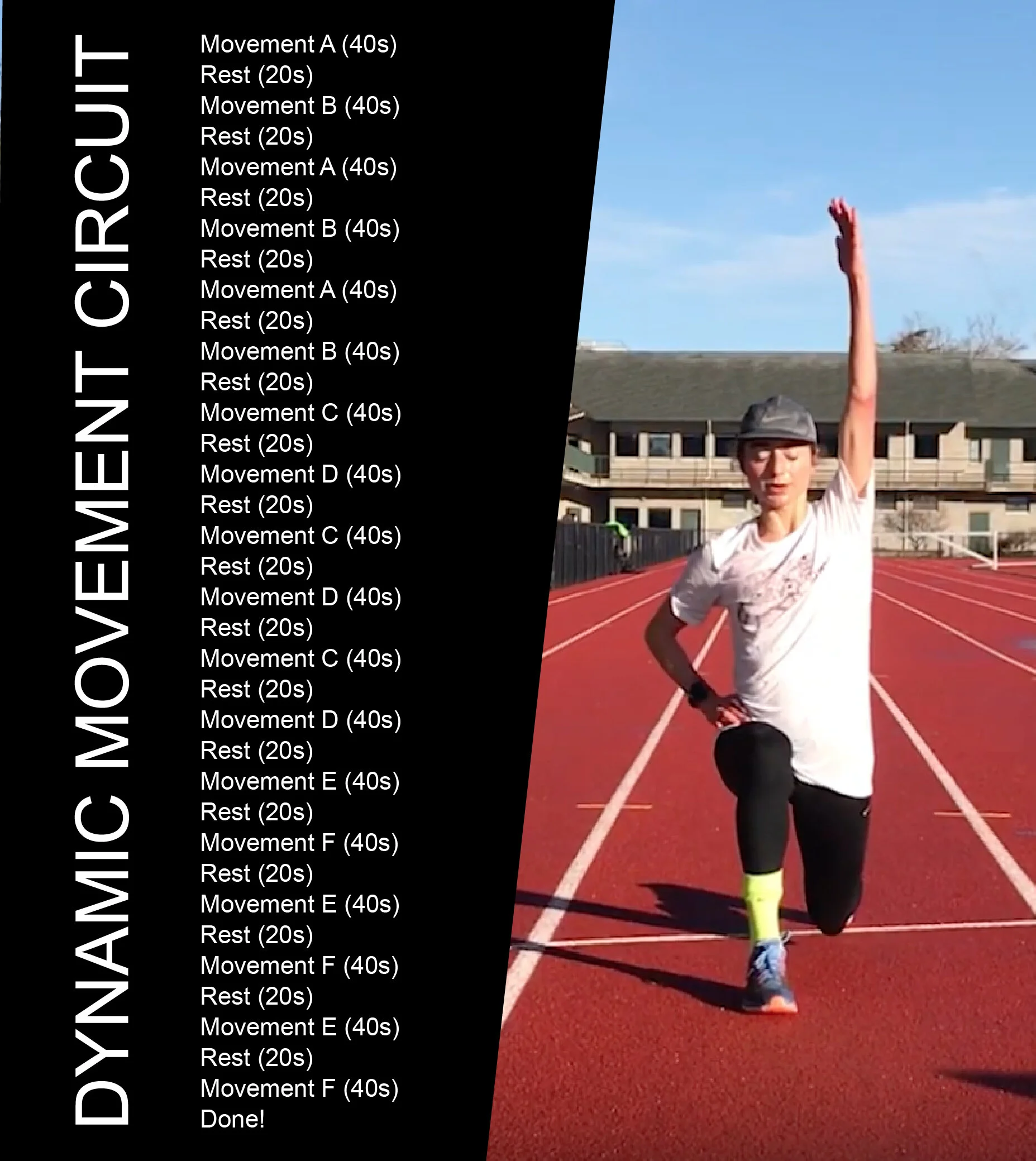Alexi Pappas: On the Importance of Dynamic Movement
By Alexi Pappas / TrackTown USA
I never knew quite how important dynamic movement was to my health as a runner until after my first major injury when I had to regain all my fitness from scratch. For me, “dynamic movement” refers to exercises that force my body to move and gain strength in non-running ways – specifically, side-to-side and up-and-down movements that don’t strengthen naturally with running alone. While dynamic movement doesn’t directly make you a faster runner, high dynamic strength can be a helpful factor on an uneven cross country course or in a rough track race, and most importantly, having a dynamically strong body increases durability and prevents injuries.
When I was developing as a runner in high school, dynamic movement was a major part of my training, but I just didn’t know it. Competitive soccer (and recreational basketball and other sports) were an integral part of my life until college – what I knew was that it made me happy, what I didn’t know was that playing other sports made me a much stronger and more durable runner.
In soccer, for example, as compared to running, movement is much more lateral and unpredictable. Movement happens in all directions, including sometimes up in the air, and a goal in training is to prepare your body to jump, slide, switch directions, or execute any number of other movements quickly and efficiently. So naturally, the training included more lateral, dynamic, and jumping type movements as compared to my cross country and track training which was much more straightforward (no pun intended).
When I went to Dartmouth, I carried over much of the durability soccer lent me into my collegiate running life. I believe my athleticism sustained throughout my first few years at Dartmouth and likely even beyond, since I did not get any injuries. Perhaps my participation in intramural hockey my freshman year played some role, but in any case, I still felt like an athlete. I went to Oregon for a 5th year and we were trained in dynamic movements by legendary coach Jimmy Radcliffe. Our running coach, Maurica Powell, worked to incorporate Coach Radcliffe’s training into our routines, and many of the movements we did reminded me of what I might have done as a soccer player. I did not feel particularly graceful when doing those routines, but I knew that small doses of athleticism continued to be infused into my training and would benefit me tremendously.
My dynamic athleticism continued into my professional career, where my coaches continued to have us jump, throw, push, and more at practice (outside of our running), but ultimately I got my first serious injury at age 27 shortly after the 2016 Rio Olympics. This injury happened after a series of sudden stresses that I encountered at once, and mainly boiled down to over-training and under-resting as I transitioned into becoming a marathoner. The injury took me out of running for nearly six months. It took me months to find the right kind of care to help my specific injury, and by the time I did, I was completely out of shape. I tried to maintain my fitness through cross-training, but we didn’t want to push my body and exacerbate my injuries through overdoing the cross-training. So, the result was that I not only lost my running fitness, but also the athletic dynamic movement durability that I had built up.
In time, I became healthy and was able to run and train again. Then, just as I was beginning to taste fitness again, I got re-injured. I recovered, started running little by little, and got injured again. I didn’t understand why I was caught in this cycle. What was I missing?
Then I sat down with my physio, John Ball, and his team at Maximum Mobility Chiropractic in Arizona, and discovered the issue. Instead of just looking at my injury in the moment, John traced me back to my athletic roots. When I first found running and started to get really good, I was coming to the sport as an athlete. I was already playing soccer, basketball, and softball – and this athletic background provided the foundation for my transition into running. As I was running more and getting faster, I was doing it with an athletic body that had a built-in durability. Now, here I was trying to come to running from zero. It was like I was trying to paint a wall without putting the primer down first. None of the paint could stick. I understood that as I worked to slowly regain my running fitness, I also needed to work on regaining my athleticism. I needed to jump, leap, and move sideways. I needed to incorporate dynamic movement into my training.
Only this time, I would do it right. Instead of racing to reach 100 miles a week, I ran 4-5 miles a day and took high intensity interval training classes to help me become the durable athlete I needed to be. I dedicated time each day to working on my dynamic movement, pulling together my favorite exercises and drills into a “circuit” every day. At first, I almost did more dynamic movement work than running. Then, in time, I was able to incorporate more and more running. I started to recognize myself again – I started to feel the connection between my body and mind that I was familiar with, but hadn’t felt in a long time. Now, I run more miles than I do explosive jumps, but I will never completely phase out athletic movement in my training routine. Just yesterday, I picked up a basketball and dribbled it around the gym after weights practice, and I knew it was a good sign when I still felt somewhat natural going for a layup.
As a special addition to this story, I wanted to share more specifics about the dynamic movement “circuits” I created for myself. The inspiration for my circuits came from Dr. John Ball, Coach Jimmy Radcliffe’s book, and Sarah Whipple, a former UO teammate and a High Intensity Interval Training designer.
You do not need to do a circuit every day. They should be incorporated into your weekly plan as it makes sense, perhaps only doing circuits on easier running days. As your mileage increases, perhaps one circuit a week or on an off day is the best plan to avoid overtraining.
Now let’s get to the specifics. In total, one “circuit” takes me about 18 minutes. The 18 minutes are broken down into three 6-minute sets, each comprised of two different movements which I alternate back and forth (for a total of six movements). I like to do 40 seconds “on” followed by 20 seconds of rest, rotating between two different movements three times each. So the entire circuit looks like this:
In terms of what each of the four “movements” are, I follow these general guidelines: 1) something sideways, 2) something vertical, 3) something core, and 4) something where you “explode.”
Some specific examples: a speed ladder is great for the “sideways” circuit, step-ups on a low block work well for vertical, deadbugs are great for core, and med ball 180 turns are great for the “explosion” movement.
There are unlimited resources online for dynamic movement ideas, and it’s up to you to categorize them and build your own circuits. I like to switch it up – I never do the same circuit twice! This is important, since the whole point of dynamic movement is to constantly change things up and keep your body guessing. I have a trove of dozens of movements that I mix and match when I design my circuits.

